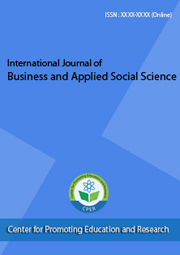current
Table of Contents
Articles
Author(s): Tareefa S. Alsumaiti , Jason A. Tullis, Bowei Xue
Abstract:
Aboveground biomass (AGB) of Avicennia marina forest was mapped using airborne LIDAR-derived metrics in Eastern Mangrove Lagoon National Park,Abu Dhabi. From small footprint near-infrared LIDAR, multiple percentile heights were calculated using a neighbourhood algorithm. Multiresolution image segmentation was then employed to transform the 2D LIDAR-derived image into structurally homogeneous units. Given that neighbourhood size affects the calculation of the height metrics, neighbourhood sizes with 3 and 5 m radii were tested to evaluate workflow performance. AGB measurements from twenty field sample plots, each 154 m², were incorporated into a machine learning regression tree to map per-segment biomass throughout the study area. Based on in situ reference, the larger 5 m neighbourhood resulted in higher accuracy (RMSE= 10.17, R= 0.87, R²= 0.76) and was thus selected for biomass estimation. Final segmentsizesranged from 42 to 20,000 m² with an average of 2,445± 118 m², whereas biomass density per segment ranged from 0.23 to 13.18 (kg/m²) with an average of 5.16 ± 0.14 (kg/m²) and a total of 14,850 kg. Additionally, about 49% of the study area had a low biomass density (≤ 4.15 kg/m²), 23% had a moderate biomass density (4.16 to 8.01 kg/m²), and 28% had a high biomass density (8.02 to 13.17 kg/m²). Based on aper-pixel canopy height model generated from the same LIDAR mass points, minimum, average, and maximum height was0.1, 3.0, and 7.9 m, respectively. While this study represents the first LIDAR-derived AGB and height inventory of Avicennia marina in the UAE, it also combines in situ reference, segmentation, and multiple percentile height statistics in an innovative machine learning approach that is replicable for other mangrove inventories. The study demonstrates encouraging results in biomass mapping of mangroves in the UAE.






